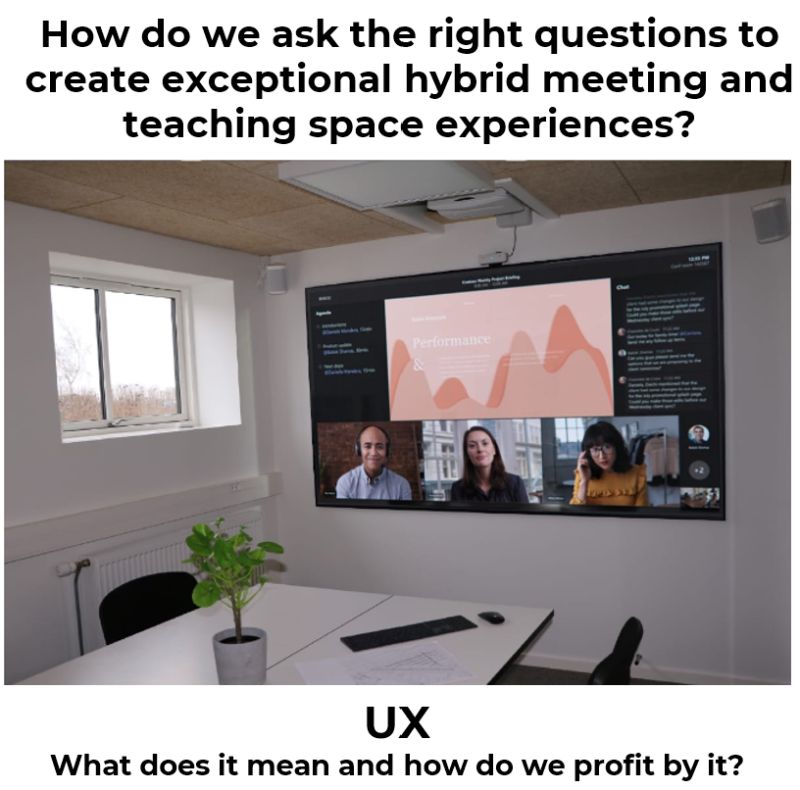Talking about good ‘user experience’ (UX) in Microsoft Teams Rooms is easy.
But what does good UX in hybrid workspaces really mean - and why is it such a wasted opportunity?

UX is a term that’s used in the most general - and often misleading - ways. Within AV it’s usually associated with GUI or control panel design. But this is not it. UX for MTRs is about the total experience of the room, from its temperature to furniture to audio intelligibility.
AV’s secret sauce has always been to turn technology into experience, to take the potential contained within the wall boxes into a 3D sensory experience in the free space of the room.
This is how AV companies distinguish themselves from IT/UC companies.
UX is based on the principles of Human Centred Design (also User Centred Design). There are different approaches and methodologies (usually trademarked!), but I prefer a simpler approach.
It starts by actually talking to actual users, not just the stakeholders and budget holders. Capture user requirements (a specific UX practitioner skill set) - without the use of leading questions - and develop these into hard, measurable, repeatable - and certifiable - outcomes. You need to start with the end in mind. Reverse engineering, if you like.
It's not about spending money. Asking the right questions leads sometimes to the right answer being a flipchart in the corner, not a fancy interactive board that might also make coffee. Using AI, naturally.
At Greg Jeffreys Consulting Ltd we use a process of disaggregation, namely breaking the design down into the correct granular elements and developing strategies and metrics for each. This applies to new builds and refurbs. It applies to the UX of both in-person and remote participants.
My White Paper ‘MTRs - The Bigger Picture’ drills down into both the approach and its details. Download it here.

Posted: 26th June 2023